IxDAwards
News


Vote for the 2015 People’s Choice Award!
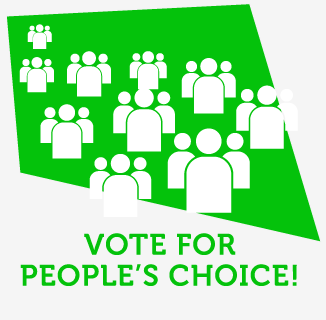
We’re looking forward to celebrating the 2015 Interaction Awards on February 11th at Interaction15, but there is one award to choose: The People’s Choice Award.
Cast your vote for the 2015 People’s Choice Award!
We invite you to elevate and celebrate the project you think represents the best of Interaction Design out of the amazing shortlisted projects from this year’s entries. The Interaction Awards’ People’s Choice voting is now open at http://awards.ixda.org/entries. You have the power to shape the outcome.
How it works
It’s simple. Find the project you want to support and then vote for that project from the project’s page. All finalist and shortlisted projects are eligible. A vote is a tweet, and each account is allowed to vote for one project, so make your vote count. (Keep in mind, RTs aren’t counted, so make a fresh vote that starts with @IxDAwards and includes the project’s hashtag!)
The five projects that receive the most tweets between 5 January to 7 February will be put up for a final round of voting by the attendees at the Interaction15 conference. The People’s Choice will be announced along with the other winners at the Interaction Awards ceremony the evening of 11 Februrary.
Cast your vote now and follow our announcement on February 8th to see how your vote counted! Anything can happen!
Spread the word and promote your favorite projects before voting closes on February 7th at 11:59pm PST.


Announcing the 2015 Interaction Awards Finalists
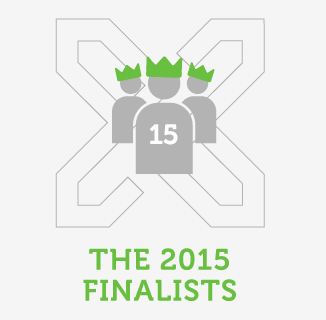
Two weeks ago, our global Jury met at Copenhagen Institute of Interaction Design (CIID) to review all of the shortlisted entries and choose the best examples of Interaction Design for 2015. It was an enormous task for our amazing jury to narrow down to five finalists per category, and they were up for the challenge.
We’re pleased to announce the finalists of the 2015 Interaction Awards, all of whom will be celebrated at Interaction15 in San Francisco, CA 9-11 of February, 2015. Best in Category, Best Student, Best in Show and the winner of the People’s Choice Award (all shortlisted projects are eligible, with voting starting January 2015) will be announced live at the Interaction Awards Celebration on Wednesday evening, 11th of February. This will be a wonderful way to close out Interaction15 and celebrate.
Congratulations to the 2015 Interaction Awards finalists!
Optimizing
Making daily activities more efficient.
eOSCE – Examinations People Like
Institut für Software, HSR Hochschule für Technik Rapperswil, CH, Professional
MyMilkman.ie – Fresh UX Delivered to your Door
Frontend.com, IE, Professional
Redesigning breast cancer diagnostics
Designit, NO, Professional
Patient Data Explorer
SAP SE, DE, Professional
VW.com
Deutsch LA, US, Professional
Engaging
Capturing attention, creating delight and delivering meaning.
Career Quest
QUEST Alliance, IN, Professional
Hackaball
Made by Many, GB, Professional
National Pro Grid League
Cooper, US, Professional
Learning to See, Seeing to Learn
University of Pittsburgh [Center for Learning in Out-of-School Environments] and Carnegie Mellon University [Create Lab], US, Professional
Water Watcher
Smart Design, US, Professional
Empowering
Enabling people to go beyond their limits.
Alvio
R/GA, US, Professional
BlindMaps.org
Blindmaps.org, AT, Professional
Remind – Music for Memory
Umeå Institute of Design, SE, Student
School in the Cloud
Made by Many, GB, Professional
Learning to See, Seeing to Learn
University of Pittsburgh [Center for Learning in Out-of-School Environments] and Carnegie Mellon University [Create Lab], US, Professional
Expressing
Encouraging self expression and/or creativity.
Expressive Wearable
Art Center College of Design, US, Student
FRICKbits
thirteen23, US, Professional
MixDown
Copenhagen Institute of Interaction Design, DK, Student
Tink
Stanford University, US, Student
toot
SUPSI, CH, Student
Connecting
Facilitating communication between people and communities.
100 Years of Design
Second Story, part of SapientNitro, client: AIGA, US, Professional
GreatSchools Local
GreatSchools, US, Professional
Sentiment News
Yahoo, TW, Professional
Skype in the Classroom
Made by Many, client: Skype/Microsoft, GB, Professional
The Nike SB App
R/GA, client: Nike, US, Professional
Disrupting
Re-imagining completely an existing product or service by creating new behaviors, usages or markets.
Efficia ECG100
Royal Philips, NL, Professional
The Eventbrite Seat Designer for Reserved Seating Events
Eventbrite, US, Professional
Pearson – helping define the future of education
POSSIBLE, US, Professional
Redesigning breast cancer diagnostics
Designit, NO, Professional
Signet
Ziba Design, US, Professional
Special thanks again to CIID for being a host to the Interaction Awards and hosting the jury weekend. We look forward to seeing you in San Francisco at Interaction 15!


2015 Jury Weekend

We’ve just wrapped up the 2015 Jury Weekend in Copenhagen, and we look back at some truly amazing days with our esteemed group of jurors.
After 10 months of planning and conspiring, the 2015 Interaction Awards Jury gathered at the creative hub that is Copenhagen Institute of Interaction Design (CIID) . Part academic institution, part research facility, consultancy and incubator, CIID has positioned itself as one of the leading forces of interaction design globally. We could not have asked for a better place to stage the fourth installment of the Jury weekend, and we are grateful for the incredible atmosphere and level of detail put into every aspect of our stay.
The diversity of our esteemed jurors, both in geography and disipline created a fantastic dynamic spanning across the whole spectrum of our profession from philosophy and ethnography via service design toward core interaction design. Enterprise, consultancy and academia was equally present to frame the discussion.
The projects elevated by our international panel of 100+ peer reviewers to shortlist status were all examined based on the same four criteria:
- Opportunity: What opportunity was the project addressing?
- Audience: Who were you designing for?
- Impact: What was the impact of the project?
- Craft: What was the project’s design process?
Looking at each and every project with these lenses enabled the jury to judge a great variation of work based on a unified set of criteria. It was a daunting task we asked of them, and a lot of the time excruciatingly difficult to select the pieces worthy of international recognition, but our amazing Jury was up to the challenge.
If we need to give the work submitted to the 2015 Interaction Awards a theme it can only be described as diverse - both in its application and intent. The quality of the body of entries keeps improving, and in its fourth year, the Awards is delighted to see a continued increase in the amount of work from industries not traditionally associated with Interaction Design, exposing projects and experiences that are not necessary mainstream, but in an of itself important and sometimes critical for their intended audience.
As with previous years, we recognize that we want to see even more work from outside Europe and US, the traditional strongholds of our profession. In order to create a truly global platform for showcasing exemplar work from all over the world this will have a continued focus in evolving the Interaction Awards.
We are looking forward to sharing this years finalists with you come December and hope you will be as excited about the body of work as we are.
Below the class of 2015 Interaction Awards
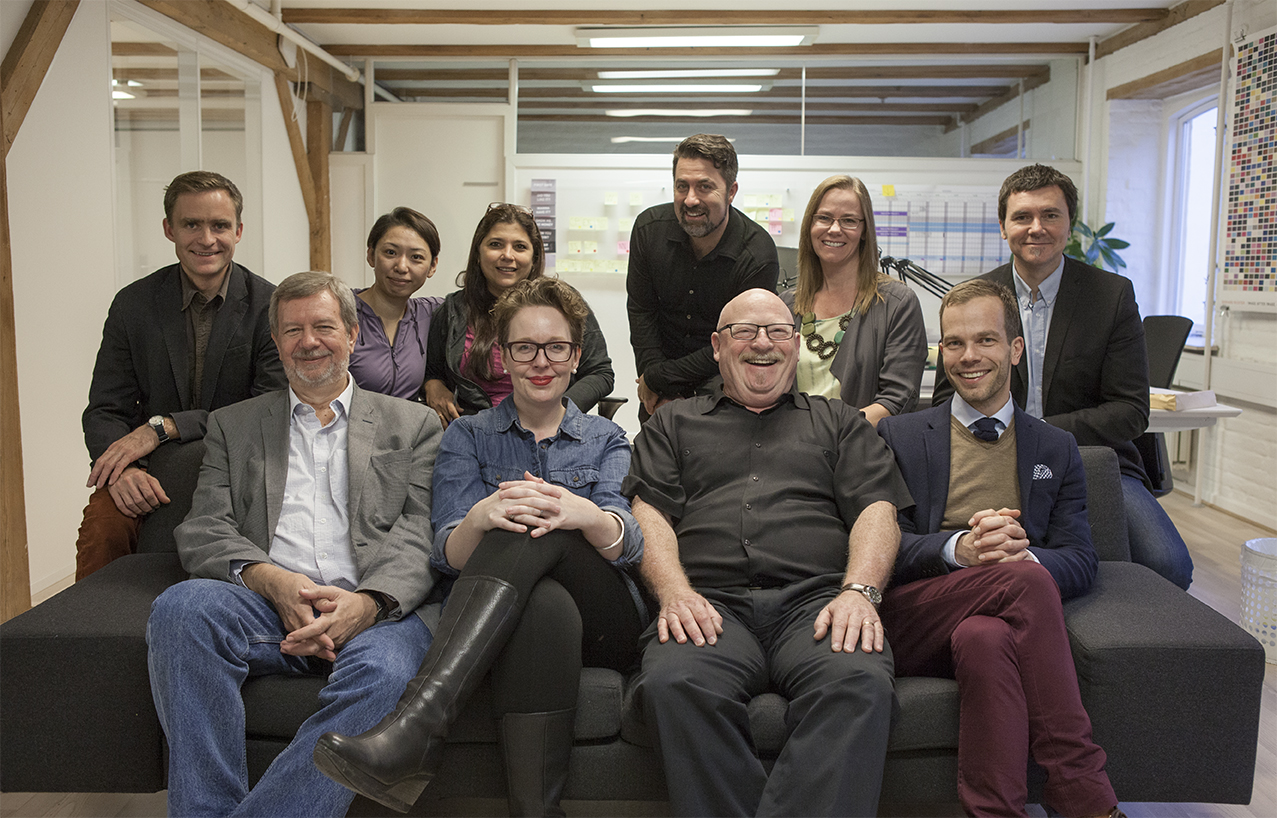


Kicking off the 2015 Jury Weekend
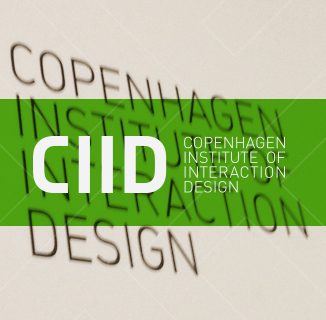
After months of preparation the 2015 Interaction Awards Jury has gathered at Copenhagen Institute of Design (CIID) for a weekend of intense deliberation, narrowing down the shortlist to a set of finalists - the best of the best.
Over the weekend in Copenhagen our esteemed group of 6 and our jury chair will go through an incredible portfolio of work from all over the world, evaluating each entry based on context, opportunity, impact and craft. It’s a daunting task we ask of them, and true to tradition the discussions will be heated, the schedule will be hectic, and selecting the pieces worthy of international recognition, very, very hard.
A big thanks goes out to CIID and especially, Simona Maschi, Alie Rose and Liselotte Lagerstedt for facilitating the 2015 Jury Weekend.


Call for Sponsorship

As the power to connect through technology transforms the world around us, the interaction designer becomes increasingly important, designing meaningful experiences that impact our work, play, and day-to-day lives, and shaping the ways in which we interact with products, services, companies, and cultures.
Coming into it's fourth year, the IxDA Interaction Awards has already established itself as the leading awards program for our profession.
It reflects the diversity of the global interaction design community and need for a common recognition platform and standards of excellence that represent the wide breadth and impact of interaction design. The Awards initiative serves as a reference for the interaction design community and businesses alike to build upon in the coming years, and provides both professionals and students with tangible examples of the best work in field today.
The Interaction Awards is an embodiment of the IxDA mission of improving the human condition by advancing the discipline of Interaction Design. From the beginning of the initiative, the goal has been to elevate exemplar work from all over the world, connecting people and competence across borders. The last four years have proven there is a need for an arena to showcase the work being done all over the world, especially beyond the traditional strongholds of our profession and now we are looking for partners to take the not-for-profit awards program one step further.
For the inaugural years we have focused on year-by-year sponsorship, culminating at the annual Interaction Conference with a grand ceremony. We are now inviting the companies that make up the frontier of Interaction Design and user experience to join a 70,000+ community of practitioners and help the Interaction Awards to go above and beyond it's mission. We are looking for companies to support a year-round initiative that will enable us to look beyond a single awards-season and enable us to create a truly global, truly democratic initiative.
As of this year we have taken considerable steps to lower the barrier of entry, first and foremost by allowing students from all over the world and professional entries from Zone 2 countries to submit one free entry, plus lowering the prices for subsequent submissions. Secondly the 2015 Interaction Awards will broaden the stage for excellence in interaction design with the introduction of the Interaction Design Yearbook - a showcase for all the good design work going on in interaction design around the world, not just the winning entries. All shortlisted entries will be showcased in the yearbook and will form part of a body of commentary, articles and discussion aimed at expanding our understanding of contemporary design practice and what 'good' looks like around the world.
If you or your company is interested in engaging with the Interaction Awards, download the sponsorship proposal or contact Co-Chairs Janna DeVylder and Niklas Mortensen
Key Figures
2014 Interaction Awards by numbers
350+ entries
65% professional entries
35% Students
92% Entries from Zone 1
8% Entries from Zone 2
Countries with most entries: USA, Great Britain, Netherlands.
Country with highest increase in entries: India
Most notable debutant country: Uganda
About IxDA
With more than 70,000 members and over 135 local groups around the world, the IxDA network actively focuses on interaction design issues for the practitioner, no matter their level of experience. The Interaction Design Association, a 501(c)6 not-for-profit and no- cost for membership organization, relies on its passionate members to help serve the needs of the international Interaction Design community.
The 2015 Interaction Awards open in July 2014, and will be celebrated at the Interaction’15 Conference in San Francisco, California in February 2015. Previous Awards have been celebrated in Amsterdam (2014), Toronto (2013) & Dublin (2012).


Introducing the 2015 Interaction Awards Shortlist
.png)
We’re excited to announce the shortlist of entries for the 2015 Interaction Awards. Seventy nine projects from 15 countries have been elevated for consideration by our legion of international peer reviewers and our esteemed Jury who added additional projects for consideration. Many thanks to all who shared their stories and submitted their work. Congratulations to those who have been selected!
The shortlisted entries will have the opportunity to further refine and resubmit their projects for final Jury consideration at CIID in November and publishing on the Interaction Awards website. All shortlisted project entries will be shared publicly and eligible for People’s Choice leading up to Interaction15.
Please congratulate the 2015 Interaction Awards Shortlist, across six categories:
CONNECTING
Facilitating communication between people and communities
100 Years of Design
Second Story, part of SapientNitro, US, Professional
Design & Development: Second Story, part of SapientNitro, Client: AIGA
GreatSchools Local
GreatSchools, US, Professional
Gretchen Anderson, Adriana Berrio, Stephen Lowe, Michael Hicks, Ines Baumgartner, Sam Oliveri, Candice Santomauro
I See U See
Copenhagen Institute of Interaction Design, DK, Student
Shamik Ray
Interference
Kollision, DK, Professional
Kollision
Live Language
Weissensee Kunsthochschule Berlin (The Berlin Weissensee School of Art), DE, Student
Ying Sun, Binbin Zhu
MSNBC Digital Eco-system
SapientNitro, US, Professional
Worldwide Chief Creative Officer: Gaston Legorburu, Creative Director: Christian Waitzinger, Experience Design Lead: Christina White, Visual Design Lead: Gunnar Kiene, Experience Designer: Cass Crockatt, Art Director: Jack Butcher, Strategy Lead: Justin Barkhuizen, Social Strategy: Stevie Dove, Content Strategy Lead: Marc Chelius
Project Pacific
Citrix, US, Professional
Elizabeth Thapliyal, Ryan Kasper
Sentiment News
Yahoo, TW, Professional
Kaba, Waiting, Camille, Cerjary, Melora
Skype in the classroom
Made by Many, GB, Professional
Made by Many, Skype, Microsoft
Talk2Me
Nottingham Trent University, GB, Student
Chia-Ming Chang
The Coffee Connector
Tellart, US, Professional
Tellart, The Secret Little Agency, OctoPD
The Nike SB App
R/GA, US, Professional
Brian Tobin – Senior iOS Developer; Devin Heatley, Albert Patton – Copywriter; Jesse Green, Lauren Manning, Marc Maleh – Data Visualization; Guy Helson, Mark Voelpel – Digital Studio; Hoshi Ludwig – Associate Creative Director; Jake Hall – Technical Lead, Nike Tech; John Agnew, Mark Whiteley, Brian Aster, Eric Swisher – Nike SB Team; Lambert Torres – Technical Lead; Leena Patankar – Nike QA; Michael Grater, Samira Sultana – Quality Assurance; Nauman Hafiz – Technical Director; Nick Parisi – Executive Producer; Patricia Choi, Wes Harris – Group Technology Director / VP, Managing Director; Patrick McInerney, Rasmus Wangelin, Young Seo – Visual Design; Pedro Mancheno, Nicolas Viegas – iOS Developer; Ron Forrester, Rochelle Shibahara, Christopher Rollo – Nike Tech; Sammi Needham – Group Executive Creative Director; Tim Farr – Senior Producer; Dana Hong – Senior Producer; Tim McElreath – Senior Java Engineer; Xavier Gallego – Associate Creative Director
Voting Doors
Tellart, US, Professional
Tellart, David Rose, Gensler
Weaver
Burg Giebichenstein University of Art and Design Halle, DE, Student
Paul Kirsten, Felix Herbst, Alexander Schulze
Wells Fargo Community Mural – West Hollywood
Wells Fargo Community Mural Team, US, Professional
Wells Fargo Strategic Store Formats, Community Mural Team (Design, Research, Project Management): Beth Currie, Wayne Edwards, Alanna Tameta, Melanie Tobin, Julian Balderas, Hana Cerkez, Anne Marie Lapitan, Jon Perkins, Megan Bayley, Devin Gumm, Charmian Liang, Julian Torres, Kelly Riggio, Matt Stewart); Community Partners: ONE National Gay and Lesbian Archives at the USC Libraries, Los Angeles Public Library Photograph Collection; Gay, Lesbian, Bisexual, Transgender Historical Society; June Mazer Lesbian Archives; Photographer Anthony Friedkin; LGBT pioneers: Ivy Bottini, Reverend Troy Perry, Pat Rocco, Don Kilhefner, Jeanne Cordova, Lynn Edward Harris
———————–
DISRUPTING
Re-imagining completely an existing product or service by creating new behaviors, usages or markets
Alvio
R/GA, US, Professional
Bezalel Arkush – Founder and CEO, Qol; Corey Wilson-Wirth – Business Development and Regulations, Qol; Ehud Tal – Creative, Qol; Tamir Rosenblum – Head of Products, Qol; Angela Wen – Senior Visual Designer; Chelsea McLemore – Senior Experience Strategist, Insights & Planning; Chloe Gottlieb – SVP, Executive Creative Director; Christian Butte – Creative Director; Christiana Kallery – Copy Director; Eric Freitag – Group Director, Product Innovation; Jonathan Bradley – Program Director, R/GA Accelerator; Lauren Von Dehsen – Interaction Design Director; Nick Coronges – VP, R/GA and Technology Partner, R/GA Ventures; Richard Ting – EVP, Global Executive Creative Director, MSP; Stephen Plumlee – Global Chief Operating Office; Sam Keene – Senior Software Engineer; Virgilio Santos – Creative Director; Wade Convay – VP, ECD, Product Innovation
Avocado
IDEO, US, Professional
Marco Triverio, IDEO
Efficia ECG100
Royal Philips, NL, Professional
Philips Design Healthcare Team
LEGO FUSION
LEGO System A/S, DK, Professional
LEGO Future Lab
Pearson – helping define the future of education
POSSIBLE, US, Professional
Matthew McBride, Bill Hermanns, Jonathan Blaugrund, Yoko Nakano, Ken Thelien, Shelby Cinca, Margarita Piza, Paul Hahn, Huei Peng Lee, Dana Wood, Chy Lin, Robert Zelin, Joshua Nathanson, Justin Chen, Eva Kang, Jason Brush, Ashley Seto
Predictive User Experience
Mercedes Benz Research & Development, US, Professional
Paolo Malabuyo, James Liu, Vera Schmidt, Marco Plewe, Patrick Corrigan, Jesh Nanthakumar, Mark Poguntke, Alexander von Hilliger, Rigel Smiroldo
Redesigning breast cancer diagnostics
Designit, NO, Professional
Marie Hartmann, Therese Hegsvold Borchgrevink, Annie Feddersen Hjelmervik
Signet
Ziba Design, US, Professional
Noah DiJulio, Malcolm Lee, Lee Croy, Carl Alviani, Sean Madden, Ayelet Katz
TetraBIN
The University of Sydney, AU, Student
Steven Bai, Sam Johnson, Martin Tomitsch
The Eventbrite Seat Designer for Reserved Seating Events
Eventbrite, US, Professional
Eventbrite Registration & Ticketing Team
The Library Compass – Experiencing the journey of knowledge for public libraries in times of digital
Technical University Munich, DK, Student
Andreas Schuster
VW.com
Deutsch LA, US, Professional
Pete Favat, Winston Binch, Mathias Appelblad, David Kim, Andy Hsu, Pelun Chen, Nathan Iverson, Marcus Silva, Jun Ikeya, Desmond Hsu, Kathy Hepinstall, Carrie Talick, Tim Shin, David Tanimoto, Vince Ku, Luis Vellanoweth, Jeremiah Dapkey, Mike Hildreth, Adam Sant, Fred Leveau, David Chen, Eugene Park, Cory Roth, Pam Scheideler, Melissa Eccles, Lauren Brown, Shaunt Halebian, Ilana Reiser, Trevor O’Brien, Nick Velloff, Brian Jeremy, Marc Gowland, Justice Erolin, Sean Klosky, Sean Schricker, Jason Clark, David Cai, Jeremy Bunting, Neseem Ishaq, Sam Kite, Karl Pablo, Taylor Loftin, Tatiana Kazantseva, Greg Parsons, Bill Delrieu, Jim Kohatsu, Juliet Scott, Rachel Connelly, Chris Suchy, Daniel Du, Tito Goldstein, James Chacon, Judy Zhou, Christian Johansson, Carter Blackwood, Sal Gonzales, Edie Chae, Chris Brown, Lauren Barrocas, Tom Else, John Deschner, Kristie Weston, Ian Phillips, Kris Morrison, Jeffrey Blish, Susie Lyons, Bud Caddell, Tessa Bodey, Margarita Ballesteros
Water Watcher
Smart Design, US, Professional
Smart Design Team: Dan Saffer, Kelsey O’Callaghan, Ivan Exposito, Lynn Collette, Nathalie Collins, Matthew Blunt
—————————–
EMPOWERING
Enabling people to go beyond their limits
Alvio
R/GA, US, Professional
Bezalel Arkush – Founder and CEO, Qol; Corey Wilson-Wirth – Business Development and Regulations, Qol; Ehud Tal – Creative, Qol; Tamir Rosenblum – Head of Products, Qol; Angela Wen – Senior Visual Designer; Chelsea McLemore – Senior Experience Strategist, Insights & Planning; Chloe Gottlieb – SVP, Executive Creative Director; Christian Butte – Creative Director; Christiana Kallery – Copy Director; Eric Freitag – Group Director, Product Innovation; Jonathan Bradley – Program Director, R/GA Accelerator; Lauren Von Dehsen – Interaction Design Director; Nick Coronges – VP, R/GA and Technology Partner, R/GA Ventures; Richard Ting – EVP, Global Executive Creative Director, MSP; Stephen Plumlee – Global Chief Operating Office; Sam Keene – Senior Software Engineer; Virgilio Santos – Creative Director; Wade Convay – VP, ECD, Product Innovation
Avocado
IDEO, US, Professional
Marco Triverio, IDEO
BlindMaps.org
Blindmaps.org, AT, Professional
Andrew Spitz, Markus Schmeiduch, Ruben van der Vleuten
Designing a Child-Friendly Environment for Stressful and Painful Medical Procedures
Eindhoven University of Technology, NL, Student
Alice van Beukering
GripHint
Designstewd.io, DK, Student
Shu-Yang Lin, Priyanka Kodikal
HearMe – A Holistic Audio Experience for the Visually Impaired
National Taiwan University of Science & Technology / National Chengchi University, TW, Student
Diona Lin, Yi-Shuan Tsai, Hsien-Hui Tang, Yu Neng-Hao
Kaiser Permanente i60 Tool
Propelland, US, Professional
Byron Wilson, Hugo Giralt, Siddharth Vanchinathan, Victoria Ngo, Dwight Davis, Jordan Lang
Muse: the brain sensing headband
InteraXon, CA, Professional
Jay Vidyarthi, Trevor Coleman, Tim Gaweco, Matthew Wellman, Michael Apollo
BMC MyIT 2.0
Artefact, US, Professional
Dave McColgin, Stephanie Hughes, Rob Girling and Gavin Kelly
Remind – Music for Memory
Umeå Institute of Design, SE, Student
Migle Padegimaite, Emily Keller, Lina Trulsson, Darja Wendel
School in the Cloud
Made by Many, GB, Professional
Made by Many, Newcastle University
Seeing to Learn, Learning to See
University of Pittsburgh Center for Learning in Out-of-School Environments, US, Professional
Marti Louw, Molly Johnson
The new generation of SERVO-ventilators
Veryday, SE, Professional
Veryday: Madlene Lindström, Siamak Tahmoresnia, Rahul Sen, Daniel Höglund, Aydin Mert, Anna Carell, Thomas Nilsson, Fredrik Ericsson, Lena Edman, Magnus Gyllenswärd, Olof Bendt, Clayton Cook, MAQUET: Anette Sunna, Karin Blomquist, Annelise Müller, Helena Stone, Arne Lindy
——————-
ENGAGING
Capturing attention, creating delight and delivering meaning
A Re-design of Shopping Experience to Leverage Consumer Showrooming Behaviors
IIT, Institute of Design, US, Student
Associate Professor, Anijo Punnen Mathew; Students, Thomas Brandenburg, Paula Falco, Xinli Lin, Paul Sheetz; IIT Institute of Design
Apocalypse 10 lives
LVL, CA, Professional
Ideacom International Web, CC&C, LVL
Career Quest
QUEST Alliance, IN, Professional
Ashis Panday, Jayashree Arasu, Nikita Bengani, Ragini Lall
ChemCrafter
Bluecadet, US, Professional
Josh Goldblum – Creative Director, Troy LaChance – Art Director, Rebecca Smith – Producer, Kathryn Stracquatanio – Developer, Jason Marziana – Developer, Aaron Richardson – Designer
Hackaball
Made by Many, GB, Professional
Made by Many
National Pro Grid League
Cooper, US, Professional
Doug LeMoine, Brendan Kneram, Jason Csizmadi
Native American Voices
Bluecadet, US, Professional
Josh Goldblum – Creative Director, Troy LaChance – Art Director, Aaron Miller – Producer, Victoria Jones – Producer, Mark Llobrera – Developer, Kim Quinn – Designer & Animator, Aaron Richardson – Animator
Project Edison: A dynamic, open source lighting installation
IDEO, US, Professional
IDEO, Joie de Vivre Hotels
Seeing to Learn
Learning to See, University of Pittsburgh Center for Learning in Out-of-School Environments, US, Professional
Marti Louw, Molly Johnson
The Coffee Connector
Tellart, US, Professional
Tellart, The Secret Little Agency, OctoPD
Treasures from Korea
Bluecadet, US, Professional
Josh Goldblum – Creative Director, Troy LaChance – Art Director, Aaron Miller – Producer, Victoria Jones – Producer, Stacey Martens – Developer, Theresa Decker – Designer, Aaron Richardson – Animator
Water Watcher
Smart Design, US, Professional
Smart Design Team: Dan Saffer, Kelsey O’Callaghan, Ivan Exposito, Lynn Collette, Nathalie Collins, Matthew Blunt
Wells Fargo Community Mural – West Hollywood
Wells Fargo Community Mural Team, US, Professional
Wells Fargo Strategic Store Formats, Community Mural Team (Design, Research, Project Management): Beth Currie, Wayne Edwards, Alanna Tameta, Melanie Tobin, Julian Balderas, Hana Cerkez, Anne Marie Lapitan, Jon Perkins, Megan Bayley, Devin Gumm, Charmian Liang, Julian Torres, Kelly Riggio, Matt Stewart); Community Partners: ONE National Gay and Lesbian Archives at the USC Libraries, Los Angeles Public Library Photograph Collection; Gay, Lesbian, Bisexual, Transgender Historical Society; June Mazer Lesbian Archives; Photographer Anthony Friedkin; LGBT pioneers: Ivy Bottini, Reverend Troy Perry, Pat Rocco, Don Kilhefner, Jeanne Cordova, Lynn Edward Harris
————–
EXPRESSING
Encouraging self expression and/or creativity
Beats Music
R/GA London, US, Professional
Anthony Baker – Technical Lead; Anthony Galvin – Technical Director; Dan Kashman, Rory O’ Flaherty, Anne Taillandier – Digital Advertising; Daniel Nieuwenhuizen – Associate Design Director; Dave Robbins – Head of Production; Germán Levy, Pablo DiStefano, Leandro Glossman, Andrian Olaru, Razvan Pavel, Artur Cistov – Engineers; James Temple, Jay Zasa – Executive Creative Director; Jenna Livingston, Jason Ashlock, Luke Wicker – Copywriters; John Mullin, Tracy Hepler, Catherine Tirpak – Social Media; Jon Ward, Simone Cucchi – Senior Designer; Josh Mandel, Kat Friis, Monique D. Veillette, Shannon Worley, Alex Wills, Jocelyn Birsch, Elisabetta Viggiani, David Kalvert, Erin Rabasca, Nicolas Karlson – Broadcast Production; Josh Yeston, Wilf Eddings, Andy Bull – Art Director; JP Toher, Jason Leitch – Senior Producer; Lucio Rufo – Creative Director; Niall McCormack, Catarina Peres – iOS & Android Engineers; Patrick Van Kann – Executive Technical Director; Razvan Creanga – Quality Assurance; Rebecca Rumble – Editor; Rob Northam – Associate Creative Director; Scott Shaw – Interaction Design Director; Trent Reznor – Chief Creative Officer, Beats Music; Rob Sheridan – Creative Director, Beats Music; Ayse Kulahci – Senior Director, Product Management & Strategy, Beats Music
Expressive Wearable
Art Center College of Design, US, Student
Sangli Li
Flutter
Fabrica, IT, Student
Concept and Design: Alex Rothera, Ivor Williams, Jacopo Atzori, Aaron Gillett; Music Composition: Jhon William Castaño Montoya
FRICKbits
thirteen23, US, Professional
Ryan Hovenweep, Laurie Frick, Lani DeGuire, Sarah Johnson, Matt McGlincy, Michael VanMilligan, Doug Cook
Gramore
National Institute of Design, IN, Student
Aalok Jaiswal
MixDown
Copenhagen Institute of Interaction Design, DK, Student
Francesca Desmarais, Chia Yu Hsu, Arunima Singh, Paula Te
Spark Camera App
IDEO, US, Professional
IDEO design team
Stop-Motion Studio
Second Story, part of SapientNitro, US, Professional
Design & Development: Second Story, part of SapientNitro, Client: Verizon Wireless
The Nike SB App
R/GA, US, Professional
Brian Tobin – Senior iOS Developer; Devin Heatley, Albert Patton – Copywriter; Jesse Green, Lauren Manning, Marc Maleh – Data Visualization; Guy Helson, Mark Voelpel – Digital Studio; Hoshi Ludwig – Associate Creative Director; Jake Hall – Technical Lead, Nike Tech; John Agnew, Mark Whiteley, Brian Aster, Eric Swisher – Nike SB Team; Lambert Torres – Technical Lead; Leena Patankar – Nike QA; Michael Grater, Samira Sultana – Quality Assurance; Nauman Hafiz – Technical Director; Nick Parisi – Executive Producer; Patricia Choi, Wes Harris – Group Technology Director / VP, Managing Director; Patrick McInerney, Rasmus Wangelin, Young Seo – Visual Design; Pedro Mancheno, Nicolas Viegas – iOS Developer; Ron Forrester, Rochelle Shibahara, Christopher Rollo – Nike Tech; Sammi Needham – Group Executive Creative Director; Tim Farr – Senior Producer; Dana Hong – Senior Producer; Tim McElreath – Senior Java Engineer; Xavier Gallego – Associate Creative Director
Tink
Stanford University, US, Student
Megan Chiou, Alfredo Sandes, Kunal Chawla
toot
SUPSI, DE, Student
Federico Lameri
TRANSFORM
MIT Media Lab, US, Student
Daniel Leithinger, Sean Follmer, Amit Zoran, Philipp Schoessler
——————————-
OPTIMIZING
Making daily activities more efficient
Alvio
R/GA, US, Professional
Bezalel Arkush – Founder and CEO, Qol; Corey Wilson-Wirth – Business Development and Regulations, Qol; Ehud Tal – Creative, Qol; Tamir Rosenblum – Head of Products, Qol; Angela Wen – Senior Visual Designer; Chelsea McLemore – Senior Experience Strategist, Insights & Planning; Chloe Gottlieb – SVP, Executive Creative Director; Christian Butte – Creative Director; Christiana Kallery – Copy Director; Eric Freitag – Group Director, Product Innovation; Jonathan Bradley – Program Director, R/GA Accelerator; Lauren Von Dehsen – Interaction Design Director; Nick Coronges – VP, R/GA and Technology Partner, R/GA Ventures; Richard Ting – EVP, Global Executive Creative Director, MSP; Stephen Plumlee – Global Chief Operating Office; Sam Keene – Senior Software Engineer; Virgilio Santos – Creative Director; Wade Convay – VP, ECD, Product Innovation
eOSCE – Examinations People Like
Institut für Software, HSR Hochschule für Technik Rapperswil, CH, Professional
Kevin Gaunt, Sebastian Hunkeler, Philippe Zimmermann, Stephan Schallenberger, Felix Schmitz, Markus Stolze
HearMe – A Holistic Audio Experience for the Visually Impaired
National Taiwan University of Science & Technology / National Chengchi University, TW, Student
Diona Lin, Yi-Shuan Tsai, Hsien-Hui Tang, Yu Neng-Hao
MyMilkman.ie – Fresh UX Delivered to your Door
Frontend.com, IE, Professional
Frontend Design Team
Oyasami
Copenhagen Institute of Interaction Design, NL, Student
Pierluigi Dalla Rosa, Shamik Ray, Neha Parekh
Patient Data Explorer
SAP SE, DE, Professional
Marion Fröhlich, Alessandro Sposato, Dominik Bertram, Matthias Steinbrecher
PIRCH Advisor
Artefact, US, Professional
Sabrina Boler, Mei Hsei, Nick Alto, Sam Baker
Predictive User Experience
Mercedes Benz Research & Development, US, Professional
Paolo Malabuyo, James Liu, Vera Schmidt, Marco Plewe, Patrick Corrigan, Jesh Nanthakumar, Mark Poguntke, Alexander von Hilliger, Rigel Smiroldo
Redesigning breast cancer diagnostics
Designit, NO, Professional
Marie Hartmann, Therese Hegsvold Borchgrevink, Annie Feddersen Hjelmervik
SAP Ganges
SAP Labs India Pvt Ltd, IN, Professional
Neelakantan Padmanabhan, Rakesh Rai, Gian Franco Bonini, Sri Vidhya A N, Shirish Totade, Ravi Srinivasan, Joe Kattackal, Raghavendra Bhuvan, Mohan George, Sajid Saiyed, Deepak Mallya, Abhijit De, H S Vinay, Nishita Gill
The Library Compass – Experiencing the journey of knowledge for public libraries in times of digital
Technical University Munich, DK, Student
Andreas Schuster
The new generation of SERVO-ventilators
Veryday, SE, Professional
Veryday: Madlene Lindström, Siamak Tahmoresnia, Rahul Sen, Daniel Höglund, Aydin Mert, Anna Carell, Thomas Nilsson, Fredrik Ericsson, Lena Edman, Magnus Gyllenswärd, Olof Bendt, Clayton Cook, MAQUET: Anette Sunna, Karin Blomquist, Annelise Müller, Helena Stone, Arne Lindy
VW.com
Deutsch LA, US, Professional
Pete Favat, Winston Binch, Mathias Appelblad, David Kim, Andy Hsu, Pelun Chen, Nathan Iverson, Marcus Silva, Jun Ikeya, Desmond Hsu, Kathy Hepinstall, Carrie Talick, Tim Shin, David Tanimoto, Vince Ku, Luis Vellanoweth, Jeremiah Dapkey, Mike Hildreth, Adam Sant, Fred Leveau, David Chen, Eugene Park, Cory Roth, Pam Scheideler, Melissa Eccles, Lauren Brown, Shaunt Halebian, Ilana Reiser, Trevor O’Brien, Nick Velloff, Brian Jeremy, Marc Gowland, Justice Erolin, Sean Klosky, Sean Schricker, Jason Clark, David Cai, Jeremy Bunting, Neseem Ishaq, Sam Kite, Karl Pablo, Taylor Loftin, Tatiana Kazantseva, Greg Parsons, Bill Delrieu, Jim Kohatsu, Juliet Scott, Rachel Connelly, Chris Suchy, Daniel Du, Tito Goldstein, James Chacon, Judy Zhou, Christian Johansson, Carter Blackwood, Sal Gonzales, Edie Chae, Chris Brown, Lauren Barrocas, Tom Else, John Deschner, Kristie Weston, Ian Phillips, Kris Morrison, Jeffrey Blish, Susie Lyons, Bud Caddell, Tessa Bodey, Margarita Ballesteros


Thank you for entering the 2015 Interaction Awards

We cannot wait to see the goodness that has come in to this year’s Interaction Awards. Even better will be sharing that with all of you.
Next for us is starting the peer review process. We have asked over 100 Interaction Design colleagues to take part in the process, with each project being reviewed at least three times. It’s that rating that will help us determine which projects move on to the shortlist, and thus into the Jury weekend.
We will announce the shortlist on October 14th. Thank you for celebrating Interaction Design and sharing your stories!


What time is closing time?
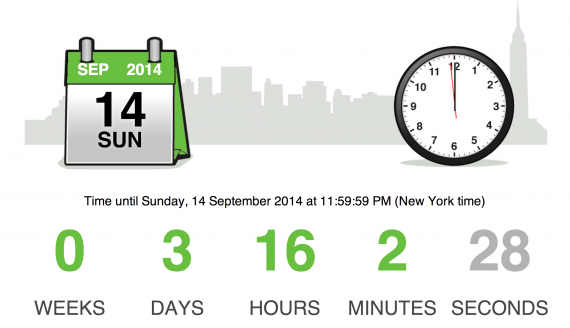
Being a global bunch, it probably doesn’t hurt to clarify what time Sept 14 at 11:59 PM ET is for where you are. Here’s a general idea, starting with our base!
Vancouver: 8:59 PM, Sunday, Sept 14
Denver: 9:59 PM, Sunday, Sept 14
Omaha: 10:59 PM, Sunday, Sept 14
New York City: 11:59 PM, Sunday, Sept 14
Rio de Janerio: 12:59 AM, Monday, Sept 15
Dakar: 3:59 AM, Monday, Sept 15
London: 4:59 AM, Monday, Sept 15
Oslo: 5:59 AM, Monday, Sept 15
Dar es Salam: 6:59 AM, Monday, Sept 15
Dubai: 7:59 AM, Monday, Sept 15
Mumbai: 9:29 AM, Monday, Sept 15
Singapore: 11:59 AM, Monday, Sept 15
Tokyo: 12:59 PM, Monday, Sept 15
Sydney: 1:59 PM, Monday, Sept 15
Auckland: 3:59 PM, Monday, Sept 15
Get on it! Enter your professional or student project into the Interaction Awards! http://bit.ly/1uxlkeJ


Partnering with the Interaction Design Foundation
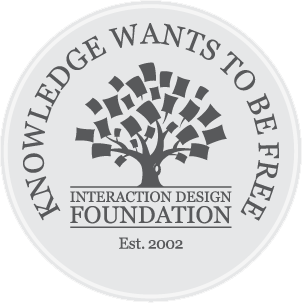
The Interaction Awards are delighted to announce a media partnership with The Interaction Design Foundation. Alongside IxDA, the Foundation is one of the most important and well-respected resources for quality open-sourced design education. Together the Interaction Design Foundation and IxDA reach across the globe in a united effort to elevate Interaction Design and User Experience.
Mads Soegaard, Founder and Editor-in-Chief said, “The Interaction Design Foundation whole-heartedly supports IXDA’s Interaction Awards for two main reasons: Firstly, because it is undeniably the best, most well-organized and most prestigious award for great Interaction Design globally. Secondly, because the whole IXDA community works towards advancing Interaction Design as a discipline, which is the reason I have personally supported the IXDA by being the Program Chair for the Interaction14 conference in Amsterdam.”
The partnership is one around a common goal and mission to support initiatives that evangelize what great design can do for humankind. The Interaction Awards and the Foundation approach this mission from different sides with an equal level of ambition that inspires design professionals all over the world. The partnership gives the Interaction Awards a truly global outreach in order to achieve our long-term goal of elevating and celebrating exemplar Interaction Design work from students and professionals around the world.
“We’re thrilled to be involved with The Interaction Design Foundation. Together with the Interaction Awards this partnership will go a long way towards increasing participation and raising public discourse around the state of Interaction Design and User Experience,” said Awards Co-Chairs Janna DeVylder and Niklas Mortensen.
The Interaction Awards sends its heartfelt thanks to The Interaction Design Foundation and their great initiatives.


The constant search for improvement - optimising our world
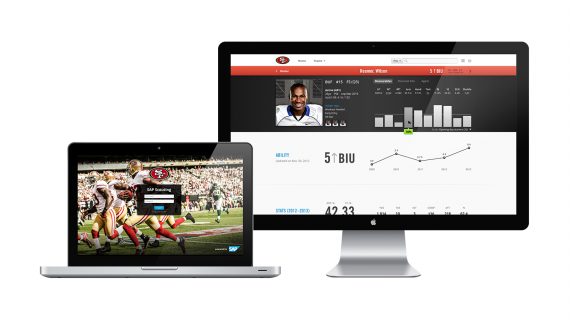
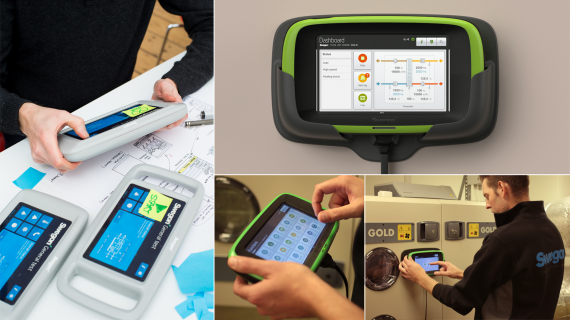
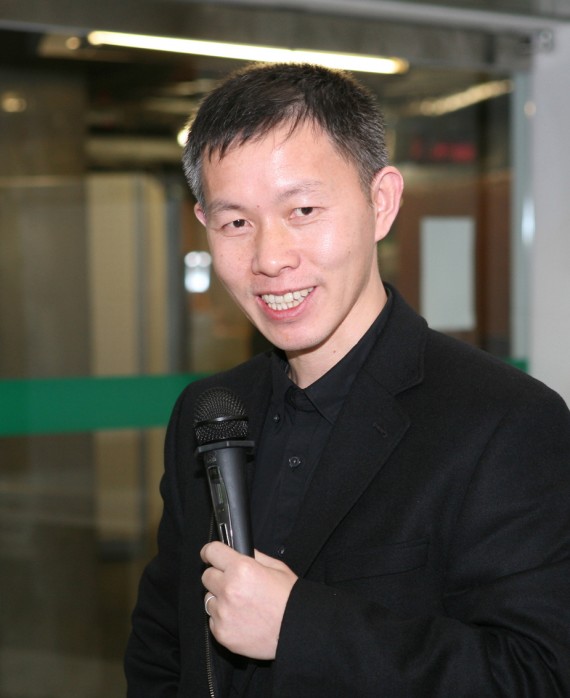

This is the fourth post in a series of articles that will form an integral part of the Interaction Design Yearbook.
The constant search for improvements to our existing services can play a faint second fiddle, lost in the media hype surrounding ‘game-changers’. But the steady march of optimisation creates better and better interactions, reducing waste, error, and frustration. Bit by bit we become more efficient; more effective; more productive!
In the design landscape, optimisation is the poor cousin to disruptive innovation. And yet, far and away, the majority of design work can be seen as the execution of incremental change, targeted at efficiency, effectiveness, or productivity. In other words, whilst the lion’s share of attention goes to the disruptive innovation, the workhorse of our changing service environment is optimisation.
Take the SAP Scouting app – a finalist in last year’s Interaction Awards – as an example. They summarise the impact of the new design as: “The SAP Scouting app takes something that’s a 10- or 12-step process and makes it a four- or five-step process.” This is typical of the optimised interaction – carving out unnecessary steps, improving the efficiency of effort, and focusing attention on the tasks at hand.
Technology has a habit of accreting functions over time. Those functions are shoe-horned into the existing interface in ways not intended by the original design. Over time, compromise follows compromise, and what was once a simple system becomes too complicated for any but the most experienced to use. This was the challenge facing Swegon’s design team when they tackled the design of a new control system for their air-conditioning units…
“Over the years, more and more features had been added making it increasingly complex and difficult to handle. It required professionals with extensive experience to navigate and handle the large number of settings…”
As we look for ways to simplify and streamline our lives, reducing the complexity of our interfaces – without sacrificing richness of functionality. This can be achieved through good design, and that is often the result of a good understanding of the people likely to be interacting with our service. At UX Australia a few days ago, Prof Xin Xiangyang gave an example of a new functional architecture for a device that was more complex structurally, but better supported the flow of people in undertaking common tasks. This simplicity of interaction was able to be achieved through the team’s understanding of those major activities and the people undertaking them.
There is another approach one might take to optimisation, however, and that is to look on aggregate across the entire ecosystem of participants, and look to optimise the net effort or productivity of all people engaged in activities. So, rather than optimising the purchasing process for a customer, one might seek to improve the productivity of the service personnel receiving and fulfilling that order.
Practice Fusion, the Cooper-designed iPad app for medical practices, strikes a balance between efficiency of the doctor, and experience of the patient. All too often, the experience of the patient is sacrificed in order to deliver productivity gains to medical personnel. However, in the case of Practice Fusion, the team found ways to increase the productivity of the doctor in ways that directly improves the patient experience.
These designs have significant, lasting impact on the day-to-day lives of the people using them. Whether that be through a reduction in the frequency of errors, improvements in the speed of repetitive tasks, or a warmer person-to-person interaction thanks to technologies that enable, rather than impede, human contact. They don’t always have to be block-busters to be good, or even great. There are plenty of small problems to fix!


2015 Interaction Awards deadline extended to 14 September

With our Jury Weekend now firmly set for end of November, we’ve found some wiggle room in the schedule for submission to the 2015 Interaction Awards.
We’re happy to announce the new submission deadline of Sunday, September 14th at 11:59 EDT.
You don’t need to wait until the bitter end, get your entries in now!

Have any questions? Check out our Help section for FAQs or ask us something new. We look forward to seeing what’s happening with Interaction Design around the world!


Re-imagining our world – Disruption

Celebrated in design industry magazines. Lauded in the business press. Disruptive ideas are the heroes of our tech-focused society. And for all the attention they receive, disruption is an elusive outcome of the creative process.
So let’s take a moment to review what we mean by “disruption”, and why it is so difficult to come by.
The Disruption category of the Interaction Awards defines disruption as an idea that redefines the industry, or changes the basis of competition. To quote the entry criteria, Disrupting entries “re-imagine completely an existing product or service by creating new behaviours, usages or markets”.
IxDA 2013, Winner Profile, Disrupting from Interaction Design Association on Vimeo.
Within the interaction design sphere we might point to gestural interfaces as a disruptive idea. The mouse certainly was. These two innovations, in their own way, changed the way we think about human-computer interactions.
The challenge with disruptive ideas is that, whilst they often seem right and natural in hindsight, they represent an intellectual discontinuity. The world becomes polarised into “before” and “after”.
Our world, for example, is now one in which smartphones reign supreme. Their introduction, in late June 2007, now feels inevitable. And yet the mobile phone industry was on a completely different trajectory prior to the release of the iPhone.
In my opinion the same cannot be said about the iPod or, more broadly, mp3 players. The category evolved slowly, keeping pace with technological changes – tapes changed to CDs changed to mp3 files – without any particularly ground-breaking innovations. The real step-change came, firstly, with the Sony Walkman and, much later, with the iTunes store. The basic concept – portable music – remained unchanged in the interim.
The discontinuity we see in the disruptive idea is born of the abductive capability of the designer. It represents an illogical leap based on disconnected and incomplete data. A join-the-dots picture, without anywhere near enough dots. And this is why the disruptive idea is so elusive; so rare; and so sought after.
Such thinking is difficult. It requires an intellectual effort that can sometimes be managed out of the project plan in favour of predictable timelines and “resource” management. Further, in the midst of an intensive process of understanding a notional ‘user’ and (re-)framing a problem, putting forth the necessary effort can be a strain.
Of course, the organisation then needs to possess the courage to invest in the ideas that come from such efforts – something that few can boast. But that is a topic for another day.
The Disruption category of the Interaction Awards seeks to highlight the efforts of design teams to reshape their industries and change the way we think of things. Those efforts aren’t always entirely successful, however they are worth examining and encouraging.
I’m interested in hearing of designs you think live up to the promise of disruption described here. Who, in your opinion, is actively working to reshape our world in truly significant ways – not just in their ambition, but in their results?


Connecting through interaction
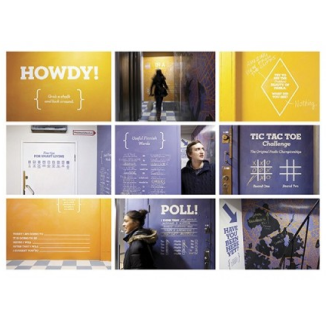
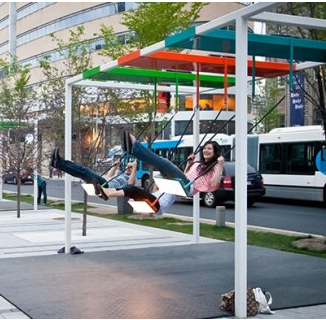
This is the second post in a series of articles that will form an integral part of the Interaction Design Yearbook.
In Interaction Design, one school of thought focuses on the design of interactions between human and device with the primary purpose being the control of that device. Another looks at the surface interactions – those request-response interactions of the interface – as a means to an end, and the design activity as one focused on the end, as much as the means. That end goal is the behaviour of the people interacting with, and through, the design.
I’d like to focus on that second school of thought in this post as it’s one that represents, for me at least, a new and powerful area of exploration for interaction design, and some fertile ground for experimentation.
The Interaction Awards have a Connecting category to look at excellence in interaction designs that “facilitate communication between people and communities”. For me, the strongest entries here are ones that facilitate the strongest connections in the most interesting ways, rather than simply interesting interactions that connect people.
As a judge of the Interaction Awards in 2013 I was struck by two entries in particular that, in different ways, created a strong connection (in the context). In one, the eventual overall winner, 21 Balançoires, the connections were playful, whimsical, and immediate. In the other, JK5, the connections were multi-layered, lasting, and asynchronous.
JK5 is a project from a student housing establishment in Helsinki. The objective was to improve the care residents take with their environment by first creating a connection between them and their fellows, embodied within the building itself.
The solution is an interesting attempt to facilitate interactions between residents who, generally, won’t interact with one another face-to-face or who are simply faces in the corridors.
Of most interest to me is the asynchronous nature of the interaction. That is, the delay built into the design such that the actions of one participant – completing a maze or a leaving a note – and those of the next, which occur in response. So, whilst the design incorporates feedback in the way messages and actions build up over time, that feedback is on a delay of hours if not days.
This adds an element of system design to the object that is typically not present in more traditional interactions. That brings about with it some very different challenges – connecting an action to a delayed reaction so that it makes sense to the participants; persistence and a sense of ‘state’; as well as change over time. Understanding these feedback loops and the delays inherent to them is not a skill typically taught to designers.
21 Balançoires is different in this regard. The feedback – the musical tones; the harmonies – change in real time in response to the actions of the participants.
Participants swing on one of 21 linked swings creating individual tones or, as participants engage with one another and connect, harmonies and melodies. There is a sense of play to the design and, through that play, the connection becomes more complex (if still fun).
There is a wealth of potential to this style of interaction design, aimed at forging connections between people; creating communities – of interest, geography, shared endeavour – ephemerally or more lasting. It can help draw us out of isolation, and reconnect us with the world around us. This can help with depression; help with collective endeavour; harness the power of crowds; or simply connect two people who would otherwise never have met.
There is real power in this style of interaction design, and one which I’m happy to see being explored in such interesting ways.


The physicality of form in interaction design
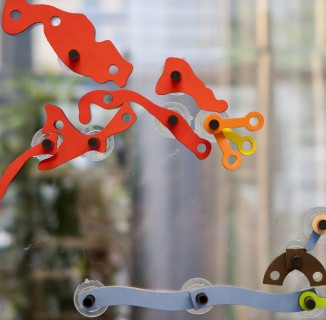
This is the first post in a series of articles that will form an integral part of the Interaction Design Yearbook.
The 2014 Interaction Awards were handed out at the conclusion of the Interaction14 conference, held at the beginning of February in Amsterdam.
Looking over the winning entries I’m struck by the physicality of the form in which the interaction takes place for many of the entries.
In some quarters Interaction Design is defined quite explicitly as a practice rooted firmly in the digital domain. Interaction12 keynote and design Professor Jonas Lowgren sees interaction design in this way, defining it as:
“Interaction design is about shaping digital things for peoples’ use.”
And it would be fair to say that the large majority of interaction design takes place in a digital context, be that a smart TV, smart phone, an app, a desktop computer, or an online service.
However, I believe that to accept this relatively narrow definition of interaction design is to mistake its roots with its entirety. The potential of interaction design is much broader and, quite literally, more potent.
If I instead take interaction design to be, as encouraged by Robert Fabricant, to be a method of enabling and shaping behaviour, that potential becomes very quickly apparent. (And, in fairness to Jonas, much more difficult to define in academic circles.)
In response to Robert’s 2009 keynote at Interaction in Vancouver, Joshua Porter noted: “…the resulting behaviour is what I design for.”
Neither Robert nor Joshua felt the need to add the qualifying “in digital contexts” to the way they view interaction design. And this is certainly borne out in my own work as an interaction designer – very little of which takes place within the digital domain.
Rather, as Jon Kolko states at the beginning of Thoughts on Interaction Design, interaction design creates a dialogue between an individual and an object. And, more importantly, through that dialogue allows the individual to perform an activity that in all likelihood is an interaction with another person.
In the foreword to Jon’s book Don Norman writes:
“Kolko demonstrates that interaction design impacts all aspects of our lives. That the tools and methods can be used for the solution of social and political issues and not simply for the development of products.”
The winning entries of the 2014 Interaction Awards demonstrate this perspective very clearly. Take, for example, KonneKt, the interactive toy intended to allow cooperative play for children in hospital isolation wards.
The ‘problem’ is human – a desire for contact, connection and play in the face of an otherwise disruptive and disturbing experience. Likewise for the family and friends who, on their side of the glass, are left feeling impotent and unable to help.
KonneKt solves this problems not through online chats or video calls – poor substitutes at best – but rather turns the barrier into a shared playground through magnets and suction cups.
That this is an exercise in interaction design seems – to me at least – readily apparent; and one of high quality at that. That it does so without recourse to digital technology is entirely to its credit.
The same could be said for Pivot, winner of the Empowering category, for its design aimed at addressing the needs of victims of human trafficking at a critical juncture in their lives. The design highlights the very real danger in which these people find themselves: “Rescue information was printed on flushable, water-soluble paper for easy and safe disposal.”
The designers of Pivot have understood very well the context within which their users will interact with their design. They have created an opportunity for a discrete interaction to occur – via a pay-phone – through the medium of feminine hygiene products (which are unlikely to rouse the suspicion of captors).
The desired behaviour is that the victim of human trafficking reach out to authorities – safely; the product is designed to demonstrate empathy, understanding and engender trust in someone who cannot be expected to trust. And it does it in a way sensitive to the cultural and emotional obstacles that might otherwise stand in the way of that person reaching out.
All of which is not to say that interaction design does not continue to play a major role in the creation of digital products and services. Quite the contrary. Look at Adobe Kuler (Expressing) or Swegon IQ-Navigator (Optimizing) for two examples.
However, interaction designers have clearly, forcefully, and irreparably broken out of their digital birthplace, and we are only just beginning to see how far we might go.


The 2015 Interaction Awards are now open for submission

The 2015 Interaction Awards are now open until 31 August, 2014 for submissions. In its fourth year, the Interaction Awards recognize and celebrate examples of excellence in Interaction Design across domains, channels, environments and cultures. We welcome entries for concept and production projects from students and professionals from around the world. We’re excited to continue inspiring the global Interaction Design community to share, discuss and celebrate the state of Interaction Design. Enter now!
We are honored to have Dr. Richard Buchanan, Professor of Design, Management, and Information Systems at Weatherhead School of Management, Case Western Reserve University as this year’s Interaction Awards Jury Chair. Dr. Buchanan is joined by an international panel of experts across design domains. The Jury members for 2015 are:
Amy Ip (Shenzhen, China)
Design Director / Design Expert at Internet Social User Experience (ISUX), Department of Social Networking Group, Tencent Company
Dr. Jeremy Yuille (Melbourne, Australia)
Senior Lecturer with the Communication Design program and Design Futures Lab, RMIT University
Dina Mehta (Mumbai, India)
Co-Founder, Convo Research and Strategy
Lavrans Løvlie (Oslo, Norway)
Founding partner of live|work
Kim Lenox (San Francisco, USA)
UX Consultant, Board of Directors, IxDA
The jury and a large group of international practitioners will be involved in the initial peer review process in September of 2014. Shortlisted entries will emerge from this process and automatically become part of the Interaction Design Yearbook, a program looking to bring reflection and critique around the state of Interaction Design around the world today and where the discipline is heading into the future. The shortlist will also be the focus of the Interaction Awards Jury, meeting in November 2014 at Copenhagen Institute of Interaction Design (CIID) in Denmark.
Finalists will be notified in December 2014 and winners officially announced and celebrated at the Interaction15 conference in San Francisco on February 9-11, 2015. Read more information about the Interaction Awards rules, eligibility and process.
The 2014 Interaction Awards recognised 27 projects selected from over 350 entries and from 27 countries. These projects demonstrated exceptional interaction design ranging from industrial control systems, to accessible health data to talking toasters. Addicted Products, from Simone Rebaudengo was awarded Best in Show, SAP Scouting, SAP was awarded People’s Choice, and Avena+ Test Bed – Agricultural Printing and Altered Landscapes, by Benedikt Groß took home both Best Student and Best Concept.
Celebrate your work! Start working on your entries and get them in by 31 August!
In the meantime, please help us spread the word:
Tweet about the Interaction Awards and follow us on Twitter for updates.
Show your support on Facebook Like the Interaction Awards.


2015 Awards Starting July 1st

IxDA’s 2015 Interaction Awards will be open for submission from July 1st to August 31st, 2014. Spread the word! Get ready! http://bit.ly/ixdabanner
Coming into its fourth year, the Interaction Awards recognize and celebrate examples of excellence in Interaction Design across domains, channels, environments and cultures.
Outstanding projects will be recognized across six categories that speak to the intentions of our designs and the nature of the interactions we create: Optimizing, Engaging, Empowering, Expressing, Connecting, Disrupting.
Entries will be evaluated based on the criteria of opportunity, audience, impact, craft and category appropriateness.
All shortlisted entries will be part of a newly-forming Interaction Design Yearbook. Finalists will receive an entry to the Interaction15 conference in San Francisco in February 2015, where winners will be announced and celebrated. Read all about the Interaction Awards rules, categories and prizes at http://bit.ly/IxDAwardsRules.
What’s new for this year?
A shorter and more structured entry process
We’re giving you more time to use the video to answer specific questions, and asking for less of a written response. Bring your project to life! The initial entry process will be open from July 1st to August 31st. Those selected for the shortlist will have an opportunity to provide additional information for the Jury weekend and the Interaction Design Yearbook.
Deepening our reflection and discourse
We’re trying something new this year by creating the Interaction Design Yearbook, whose goal is to capture the state of Interaction Design. Interaction Design is a dynamic discipline, changing rapidly year-on-year. As practitioners looking to keep pace with those changes we need a way to capture the zeitgeist of our field, and a place in which to engage in a meaningful discourse around what constitutes good (and great) work.
The Interaction Design Yearbook will serve as the community’s reference to current practice, and will host and foster a critical look at the work of Interaction Designers from around the world, and encourage discussion from across (and beyond) the community.
The Interaction Awards will continue to celebrate excellence in Interaction Design; the Yearbook will look at the broader state of our practice.
Increasing participation from around the world
The Awards have had strong participation from North America and Europe, which we look to strengthen and deepen. This year we will place additional focus on getting broader representation from around the globe. One way we are doing this is lowering the financial barrier for Zone 2 country projects and for students from around the globe.
We look forward to seeing the state of Interaction Design from around the world. Share your story!


Announcing the Winners of the 2014 Interaction Awards

We’re honored to announce this year’s top winners for the third-annual Interaction Awards!
The top winners were announced at the Interaction Awards Celebration and Interaction14 closing party, sponsored by Microsoft.
“Our goal for partnering with IxDA was to spark an ongoing conversation with the larger design community to tell our story - but more importantly invite others to tell us their story,” said Jon Friedman, Partner Director of UX at Microsoft Design. “We believe that great products are a direct reflection of great culture. The Interaction Design Award winners are a shining example of how creative culture produces inspirational work.”
Addicted Products by Simone Rebaudengo from TU Delft / Haque Design Research in the Netherlands was awarded Best in Show, Avena+ Test Bed - Agricultural Printing and Altered Landscapes by Benedikt Groß from Royal College of Art in the United Kingdom was awarded Best in Concept and Best Student project, and SAP Scouting by SAP Labs in the United States was awarded People’s Choice.
Each category awarded a Best in Category award. Best in Connecting was awarded to Konnekt: a social game for isolated children in the hospital by Job Jansweijer from Delft University of Technology in the Netherlands. Best in Empowering was awarded to Pivot by Michael Fretto, Kari Gaynor, Josh Nelson, Adriel Rollins, Melanie Wang, Tad Hirsch (advisor) from the University of Washington in the US. Best in Engaging was awarded to Addicted Products by Simone Rebaudengo from TU Delft/Haque Design Research in the Netherlands. Best in Expressing was awarded to Adobe Kuler iPhone App by Gabriel Campbell, David Ericksen at Adobe XD in the US. Best in Disrupting was awarded to Public Health England - Longer Lives by SapientNitro + Public Health England from the UK. Best in Optimizing was awarded to Swegon IQ-Navigator - A Handheld Control Unit by Veryday in Sweden. These winners were selected from over 350 submissions and a finalist pool of 27. Congratulations to all of the Finalists and Winners!
The Future Voice Award, selected by Interaction Award Jury Chair Dr. Genevieve Bell from Intel, was awarded to The World Building Media Lab at the USC School of Cinematic Arts. The Future Voice Award is selected from outside the Interaction Awards submissions, recognizing work demonstrating the profound potential of Interaction Design and evidence of what Interaction Design could become.
"The 2014 Interaction Award recipients brilliantly demonstrate how the practice of Interaction Design is dedicated to the improvement of human lives,” said IxDA President Nick Gould. “These projects, and indeed all the submissions we received, are evidence of the exciting and inspiring ways in which designers can change the world for the better. In addition to recognizing the award winners' achievement, we at the IxDA look forward to the continuing global conversation about what constitutes excellence in interaction design."
This year’s jurors gathered at Fabrica to deliberate, and Fabrica graciously created a collection of video shorts profiling all of our top winners.
We want to thank everyone for participating this year, with special thanks to our major sponsor, Microsoft, and our jury weekend sponsor, Fabrica. We look forward to seeing what’s in store for 2015!


Awards Celebration Details

The Interaction 14 conference is in full swing, but will be coming to a close on Saturday evening. All great things must end, but before you head home you’ll be saying good-bye with a bang. The Interaction Awards dinner and celebration is our chance to come together as a community to recognize some of the best examples of work in our field.
So, what to expect? The event is taking place at an incredible venue - the Het Scheepvaartmuseum (National Maritime Museum) in the Open Courtyard (a covered and heated space, of course).
Address and directions to the awards venue:
Kattenburgerplein 1, Amsterdam
You will be ferried by scenic canal boat to the venue, starting at 6:00pm. The canal boats will be leaving from near the conference venue, a short 200m walk from the Westgasfabriek. You will be directed to the pick-up point directly after the final keynote. There will be a number of canal boats, enough to carry all of us to the celebration. If you choose to make your own way to the event, it is in the city centre, walkable from both conference hotels.
Doors will open at 7:00pm, with dinner being served right away. The Awards presentation ceremony will begin at 8:00pm. The bar will be open throughout the event, and the party will continue after the ceremony.
We have a great ceremony planned, and can’t wait to share the extraordinary entries with you! See you there.


Bringing the Awards to life at Interaction14

Attending Interaction14 in Amsterdam this week? We’re bringing the Awards finalist projects to life at the Interaction Awards exhibit, starting Thursday, February 6th and closing Saturday, February 8th.
Come take a closer look at the finalists of our six categories, chat with us about the Awards and where we’re taking it moving forward, and take advantage of Project Conversations - a chance for attendees to casually meet with finalists and hear more about particular projects.
Here’s the Project Conversation schedule:
THURSDAY
Thursday, 10:30 - 11:00 coffee break
CONNECTING: The Emerging Issues Commons
EMPOWERING: Fittle
EMPOWERING: Scritch
ENGAGING: Addicted Products
EXPRESSING: Adobe Kuler
OPTIMIZING: Terrarium - Living Maps
OPTIMIZING: SAP Scouting
Thursday, 1:30 - 2:00 end of lunch break
CONNECTING: Konnekt
DISRUPTING: Fisher-Price Little People Apptivity Barnyard
EMPOWERING: Fittle
ENGAGING: Addicted Products
ENGAGING: Storsjöodjurscenter - an Interactive Monster Laboratory
EXPRESSING: Adobe Kuler
OPTIMIZING: SAP Scouting
Thursday, 3:30 - 4:00 tea break
DISRUPTING: Fisher-Price Little People Apptivity Barnyard
DISRUPTING: Public Health England
EMPOWERING: Grameen Foundation AppLab - Ledger Link
EMPOWERING: Scritch
ENGAGING: Storsjöodjurscenter - an Interactive Monster Laboratory
EXPRESSING: Adobe Kuler
EXPRESSING: Personal Billboard: Expression for the Here and Now
Thursday, 5:30 - 6:00 happy hour
CONNECTING: Konnekt
CONNECTING: Mosaic by Intuitive Company
DISRUPTING: RCS 5 Boomer
DISRUPTING: Fisher-Price Little People Apptivity Barnyard
EXPRESSING: Adobe Kuler
EXPRESSING: Personal Billboard: Expression for the Here and Now
EXPRESSING: Iterazer
FRIDAY
Friday, 10:30 - 11:00 coffee break
DISRUPTING: Fisher-Price Little People Apptivity Barnyard
EMPOWERING: Fittle
EMPOWERING: Scritch
EXPRESSING: Personal Billboard: Expression for the Here and Now
OPTIMIZING: Swegon IQ Navigator
OPTIMIZING: Terrarium - living maps
Friday, 1:30 - 2:00 end of lunch break
CONNECTING: The Emerging Issues Commons
EMPOWERING: Grameen Foundation AppLab - Ledger Link
ENGAGING: Storsjöodjurscenter - an Interactive Monster Laboratory
EXPRESSING: Personal Billboard: Expression for the Here and Now
EXPRESSING: Iterazer
OPTIMIZING: SAP Scouting
Friday, 3:30 - 4:00 tea break
CONNECTING: Konnekt
DISRUPTING: Fisher-Price Little People Apptivity Barnyard
DISRUPTING: Public Health England
EMPOWERING: Scritch
ENGAGING: Storsjöodjurscenter - an Interactive Monster Laboratory
ENGAGING: Megaphone
OPTIMIZING: Swegon IQ Navigator
OPTIMIZING: SAP Scouting
SATURDAY
Saturday, 10:30 - 11:00 coffee break
CONNECTING: Konnekt
DISRUPTING: Public Health England
EMPOWERING: Pivot
EMPOWERING: Scritch
EXPRESSING: Personal Billboard: Expression for the Here and Now
OPTIMIZING: Terrarium - living maps
Saturday, 1:30 - 2:00 end of lunch break
CONNECTING: The Redesigned NYC.gov
EMPOWERING: Fittle
EMPOWERING: Grameen Foundation AppLab - Ledger Link
ENGAGING: Storsjöodjurscenter - an Interactive Monster Laboratory
ENGAGING: Megaphone
EXPRESSING: Personal Billboard: Expression for the Here and Now
OPTIMIZING: SAP Scouting
Saturday, 3:30 - 4:00 tea break
ENGAGING: Storsjöodjurscenter - an Interactive Monster Laboratory
ENGAGING: Megaphone
EXPRESSING: Iterazer
OPTIMIZING: SAP Scouting
Come by! Looking forward to these conversations leading up to the Interaction Awards Celebration, sponsored by Microsoft!


Celebrating excellence with Microsoft

We are elated to officially announce Microsoft as the flagship sponsor for the 2014 Interaction Awards. This is a significant partnership for the Awards and reflects our strength in being an important recognition of excellence in Interaction Design.
The Interaction Awards will celebrate in style with Microsoft for the forthcoming event in Amsterdam on february 8th. Join us in honoring the wonderful finalists of the 2014 Interaction Awards at the Open Courtyard of Het Scheepvaartmuseum (National Maritime Museum), a beautiful 17th century building facing the waterfront and an icon for the Dutch Golden Age. We couldn't think of a better place to recognize the pinnacle of interaction design. Applaude Best in Category, Best Concept, Best Student, Best in Show and the winner of the People's Choice Awards and Future Voice Award, which will all be announced live on stage.
As Co-Chairs we are delighted that Microsoft has agreed to team up with the Interaction Awards, helping us to bring these amazing projects out into the world for us to learn from and recognize. Pack your bags and prepare for a magnificent event. See you in Amsterdam!
